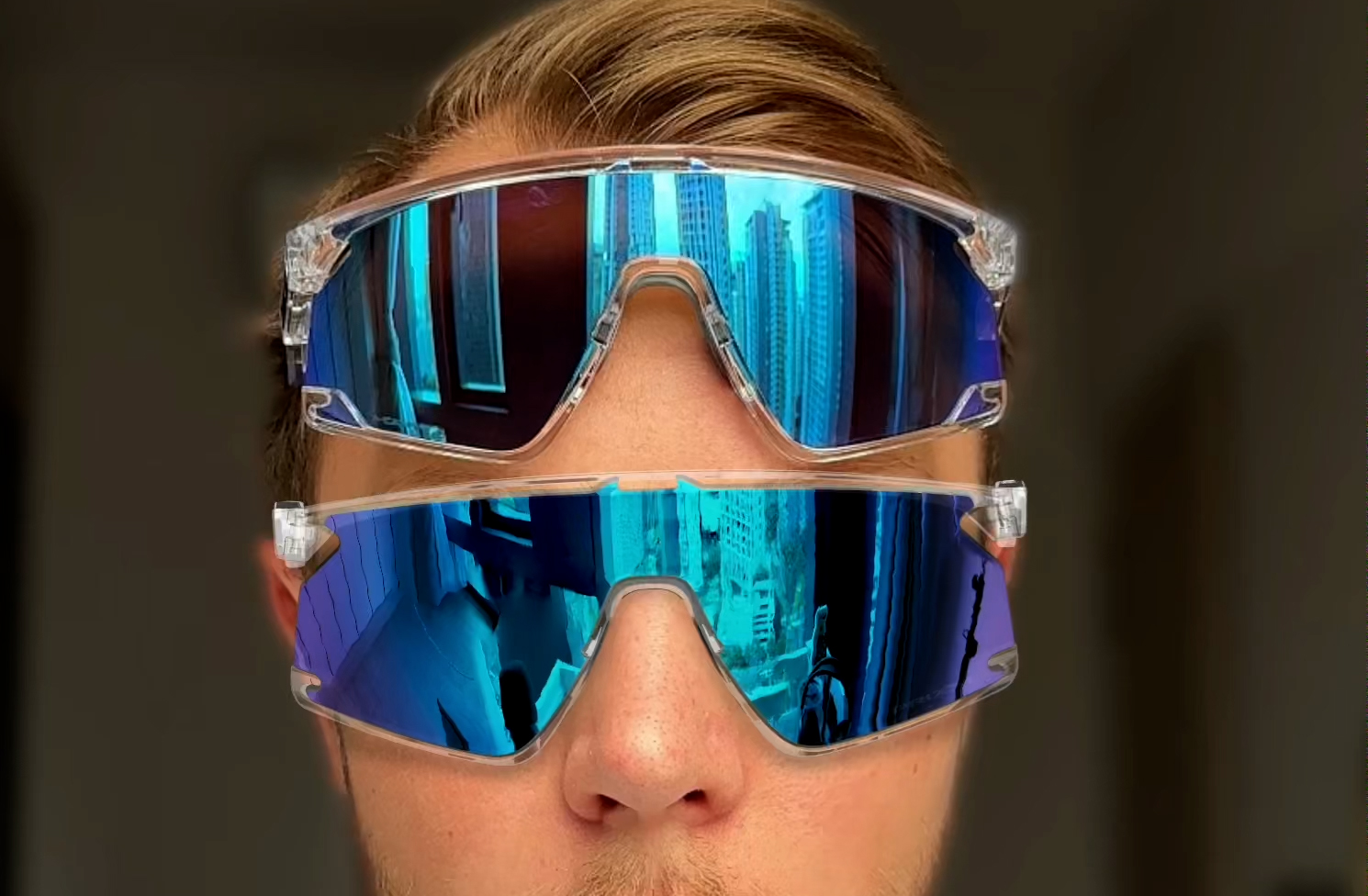Live Virtual Try-on (LVTO) for eyewear has seen significant growth and adoption over the past year. In fact, recent statistics show that as of late 2023, an estimated 85% of US apparel brands and retailers either use or plan to use virtual try-on tools. Shoppers are increasingly seeking solutions that offer a highly realistic experience to boost buyer confidence, reduce return rates, and accelerate the path to purchase. In response, the GEENEE team has doubled down on seeking efficient methods to achieve product realism, in order to deliver the best possible try-on experiences for our brand clients and their customers.
As demand increases, Virtual Try-on technology is becoming more scalable, utilizing AI-based solutions to create 3D models at scale that can be adapted, optimized, and used across various channels. These include eCommerce shopping pages, ad units, digital screens, signage, live exhibits, social media channels, and more. This allows for the creation of optimal content that can be scaled and deployed everywhere.
When tasked with delivering a recent campaign for a major global eyewear retail brand, GEENEE Lead AR Engineer Vlad Bondarenko and Technical 3D Artist Vlad Siliavkian aimed to create the most realistic, high-performance Live Virtual Try-on experience to date. Their results were impressive: an LVTO interface that loads in a second or less and 3D models of the featured products that are nearly indistinguishable from the real items. This campaign set a new benchmark for realism, and provided valuable insights that will benefit future client campaigns.
We sat down with our teammates to learn more about their approach and why they believe Live Virtual Try-on is crucial for the future of online shopping. Here’s what they had to say:
Interview with Vlad Siliavkian, Technical 3D Artist
- Why are you passionate about creating an LVTO solution and what excites you about market development?
Probably how you can achieve a better result. Adding additional decorative elements, animation, and live AR to the VTO. - What makes GEENEE LVTO’s work different from its competitors?
We focus on achieving a high level of realism and performance that sets our solution apart. - What were the key challenges you faced in developing realistic virtual try-on features?
Definitely the sizes, real sizes, and fitting them in AR, which is quite a big challenge. - How do you ensure the accuracy and realism of your 3D models?
We conduct in-depth research, find photo sources of what glasses look like on the face, and strive to achieve the same result in materials within the AR environment. - How do you handle textures and materials to ensure they look realistic on different devices and in various lighting conditions?
Every renderer shows slightly different results so our job is to reduce discrepancies to create a cohesive experience. Many small measurements can provide a good result for a product. Sometimes it’s worth being cunning and not doing it according to the technical textbook, so that it looks better. There is a phrase: ‘What is technically correct is not always visually better.’ - What are some best practices for creating 3D models that look realistic in a virtual try-on environment?
Try to work with the product not only in 3D but also to see it in life, physically in your hands. This way, you can achieve a much more accurate result.
Interview with Vlad Bondarenko, Lead AR Engineer
- Why are you passionate about creating an LVTO solution and what excites you about where the market is going?
If you were to ask a random person about their vision of the future of online shopping, most would likely mention virtual try-ons. I share this view, as virtual try-on technology continues to improve every day. - What differentiates GEENEE LVTO’s work from the competition?
The key lies in tracking quality and achieving a realistic appearance. We consistently strive to closely match the virtual try-on items with their real-world counterparts. - What are some key challenges you have encountered while developing realistic virtual try-on features?
Matching the look and feel of the brand is always a challenge, such as achieving high precision in shape and fit on the body or face, and ensuring luxury graphics on high-end items. - How do you ensure the accuracy and realism of the virtual try-on experience for users?
The best quality can be achieved when I have a physical item in my hands, allowing me to wear and test it with different sizes, graphic setups, and more. - How do you ensure AR elements blend naturally with the real world?
Depending on the brand, the approach can vary from bright and fun to positioning the sunglass brand as an outdoor essential, which we carefully consider during development. - How do you track performance?
We have custom AR analytics that analyze user engagement, including time spent, the number of items switched, and more.
GEENEE’s commitment to pushing the boundaries of Virtual Try-on technology ensures that we remain at the forefront of this rapidly evolving market. By leveraging advanced AI, thorough research, and innovative engineering, we deliver unparalleled realism and performance in our LVTO solutions. As online shopping continues to grow, so too will the demand for high-quality virtual try-on experiences, and GEENEE is poised to lead the way.
Ready to Experience the Future of Eyewear Shopping? Discover the most realistic virtual try-on solution and see how GEENEE can transform your shopping experience. Contact us today to learn more and schedule a demo!
